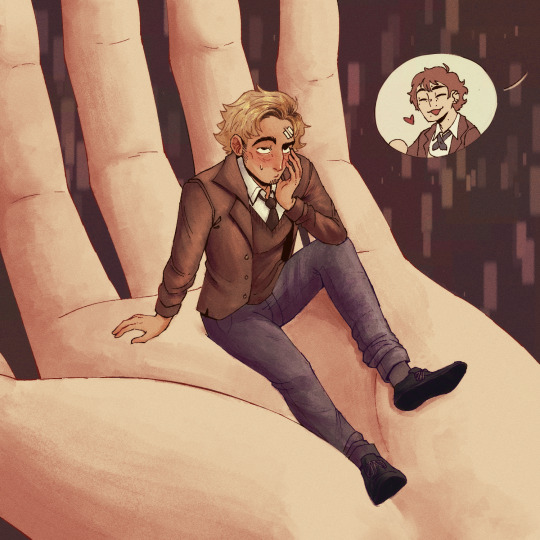she/her | puerto rican, mex, polesp/engdisc: cravinglobotomy
Don't wanna be here? Send us removal request.
Text
adorable
I was supposed to be working on the comic of the borrower fella cuz it’s due in like two days but I just couldn’t concentrate HES JUST TOO CUTE 😭
I had to draw him with Koa my hand was aching to do it

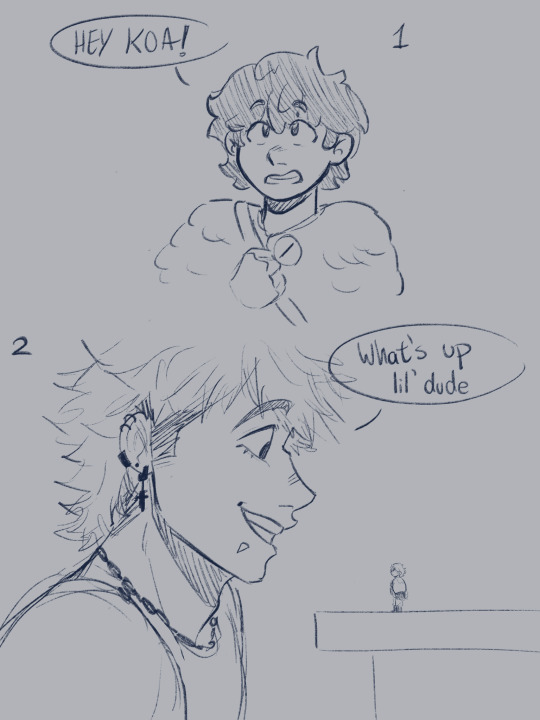
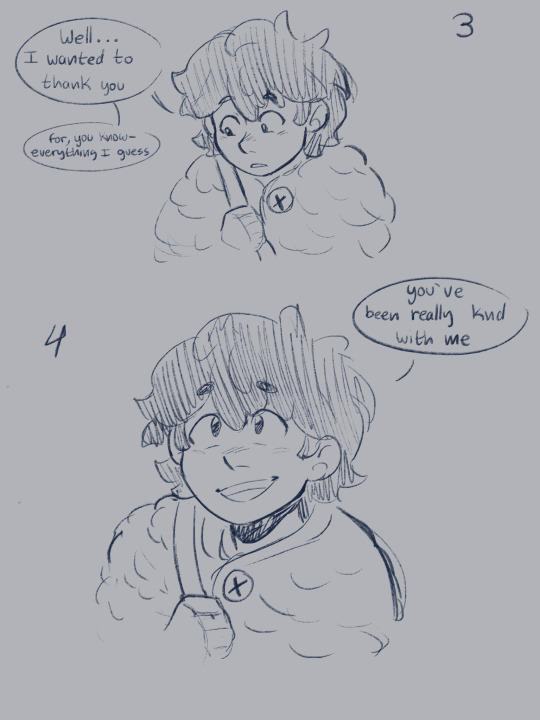
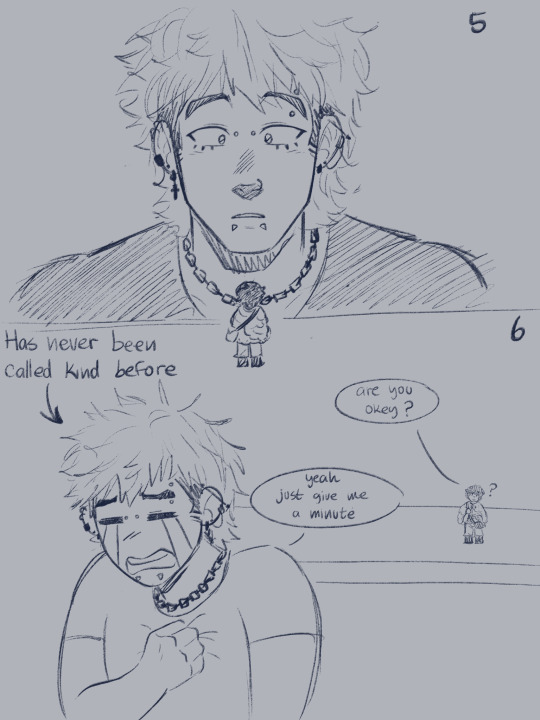
I’ve actually never draw something so fast before yey me✨
472 notes
·
View notes
Text
so cute..

strawberry desserts 🍓♡˚ 🍫₊✧
shop - twitter - instagram - etsy - kofi - commissions
681 notes
·
View notes
Text
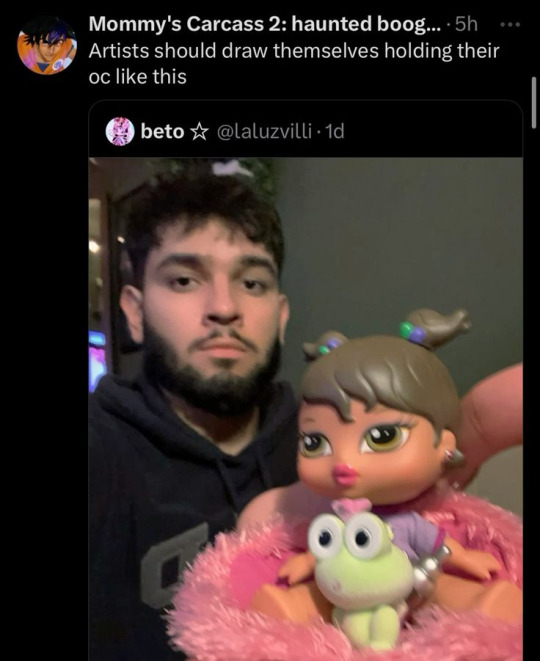

Outdated but cool trend
Just a chill gal holding her dumbass fursona persona
I got very inspired by keithdontpanic's version on Instagram!!
274 notes
·
View notes
Text
" Just a kiss. "

Lisa x Shrunken Mona WLW, G/T, SFW, MAFIA AU?? 3637 Words, moves a little slow at the beginning. Forgive me if this isn't my best writing. Open for requests.

It was a cold, rainy, dark evening. A day that the clouds swirled gray and the air was muggy from the rain, weather that anyone would find displeasure of- even those who claim to ‘love’ the rain. For Mona Megistus, it was also a hungry, hungry day, the mora-less girl hadn’t eaten- and the stars were not working in her favor this evening. She had low, long, dark purple-ombre pigtails, her outfit was mostly thrifted or donated to her, which was a black fluffy jacket, a black crop top, and purple denim jeans with black, platform boots. She walked the city’s empty streets, nobody was out because of the weather, but she had nowhere to go- bars didn’t want ‘homeless’ folks and she didn’t exactly have a home. All the girl wanted was something to munch on, but she probably can’t count on that happening this evening. So, she continued her walk, shuffling her tarot deck in her hands.
That was until she passed by a shop with a blinding, neon purple sign that read ‘free samples’, she stopped in her tracks as she approached the shop’s window. It didn’t look like any food place, that was weird, but the sign next to the neon letters also read it was a new recipe that needed reviews, so maybe it was an up and coming business. New business or not, Mona was hungry and just reading the word ‘food’ had her stomach roaring, reminding her of the cavern she needed to feed. The girl pushed open the door to the store, a ringing sound immediately cued as she entered and a girl with short green hair, a purple, long-bell sleeved and ruffled skirt dress, with thigh-high black boots turned to look at her. Mona feels scrutinized by the lady, but as the door shut behind her and the bell stopped its chime, which was what properly greeted her instead of that staring lady, she decided to speak.
“Hello there, miss,” she started and got closer to the supposed worker, “I am Mona Megistus, pleased to be here- I have an inquiry… is that sign still valid?” The moment Mona said anything about a ‘sign’ the green-haired girl looked pleased, appearing much more attentive towards the astrologist, Mona.
“Ah! The free sample? Yes? Yes, yes, yes, a sample of our boss’s finest delicacy comes to you in a very, very short minute,” the green-haired lady spoke, patting Mona’s shoulder and quickly speeding off to a doorway with a beaded curtain- pushing through the beads making that oddly satisfying noise of beads clinking against each other, as she went to get the free sample…? The astrologist blinked, she hadn’t even gotten to respond to the strange worker before she ran off, huh, an odd-duck that lady was, and she spoke… uniquely…
Mona looked around the shop, it was almost like a library- there were books everywhere, but the counter had cases of strange little potions, jewelry, and such. Almost like a magic shop… interesting. The green-haired lady came back out with a plastic container of a mysterious-looking baked good, if Mona wasn’t so hungry, surely she’d decline, but she hasn’t eaten for awhile and something like this would be fulfilling. “Our finest batch, just for you Miss Megistus~” The green-haired girl almost hissed Mona’s name, sounding almost snake-like, it was creepy in a way, but Mona bowed her head, “Why thank you, about time I’m shown some respect.” The purple-haired astrologist took the container, then the moment she looked up the green-haired girl was gone, Mona heard those beads clank- huh, it seems she went to the back again.
Mona stared at the food, she didn’t have any utensil to eat this with, but whatever, it’s not like she hadn’t eaten with her hands before. She pinched out a piece of the food, forcing it onto her tongue and closed her mouth, chewing on it slowly. The texture was pleasing and the taste was impeccable- it was almost like it was custom-made to all her ideal likings. Of course, this made Mona only eat the dish quicker, it was so delicious, drool-worthy even, and soon enough the hungry astrologist scarfed down the whole meal. That was a free sample? It should be with a kazillion mora with how tasty it was, she lowered the container once she finished, rubbing her now happy and full stomach.
Although that food was delicious, after a minute or so of consuming it- she started to feel ill… “Oh my, maybe I ate too fast…” she mumbled to herself because surely that was a logical explanation for eating the food. Mona looked around for a seat inside of the shop, oh lovely, in the corner of the store there’s a little corner couch with shelves surrounding, that should be a good spot to relax at until she feels better. The astrologist approached the couch, taking a seat with a hand on her stomach and laying the empty container on the floor. Mona starts to feel rather sleepy, normally she wouldn’t fall asleep inside of a place like this, but it was almost as if the food was laced with something to make her sleep almost immediately- before her eyes shut, the world was blurry but she did see a shadow of someone’s figure approach her, until everything went black and the astrologist fell asleep.
Hours later, Mona felt her consciousness be regained- and could hear faint talking, until she felt a gigantic thud below her, recognizing she was laid on the ground and the thud shook her entire being! “Huuh, wha… happened…” she asks aloud, her speaking was slurred and slow, while her eyes slowly opened. The world was still blurry and she needed to regain her focus, looking around, everything seemed so tall, no, like really tall. The astrologist kept turning her head until she saw the green-haired girl by her, collapsed onto the floor, but the difference was the girl was humongous compared to Mona! The astrologist widened her eyes, quickly standing up but feeling herself get a little woozy once she stood.
“It’s alright, little one, that lady is all taken care of,” a feminine voice cooed from about a sky-scraper's height above. Mona slowly tilted her head back, looking all the way up, and realized the darkness was from being completely enveloped in a woman’s shadow, her eyes focused on the lady above, she was brunette, sort of long hair- at least a little below her shoulder, she was wearing black dress pants, black heels, a white dress shirt with a loose black tie, and a blazer over it. She wore excessive jewelry, earrings, necklaces, and bracelets. If Mona wasn’t scared of this unknown lady, she would swoon from how beautiful she was, but she knew nothing of this lady- she didn’t know if there were any cruel intentions or what. Mona backed away a few steps, her brows furrowed, and she looked almost defensive. However, she looked over at the collapsed green-haired girl, and something tells Mona that it’s that lady’s fault she’s this size, and that the brunette saved her. Oh the little astrologist felt so conflicted.
Suddenly, the brunette girl started squatting down, gah- just what is she doing! Mona jumped back another step, squinting up at the lady. “Not much of a talker, are you?” The brunette girl asked with a head tilt, her eyes were so full, a pretty green that reminded Mona of a tsavorite crystal, but they were full of untrusting curiosity, the lady seemed mischievous which raised the astrologist’s guard. Though, Mona can’t get away with silence forever. “I am Mona Megistus,” she introduced with a sharp, prideful tone, “I demand that you tell me who you are and what you’re here for!” The puny astrologist crossed her arms and turned away, closing her eyes, acting as if she threw a fit, but opened an eye that glared at Lisa, just to make sure her eyes were still on the lady. Just to watch out for any unpredicted movements, of course. The brunette giggled and that confused Mona, she felt like it was disrespectful in some way, but then the brunette softly spoke, “That is fair, miss Megistus,” she nodded toward the smaller and sighed. “I am Lisa, I came here originally to shake this lady down for something, but then I saw her over here standing over you, and I’ve met this lady before- she has nothing but cruel intentions, so I saved you, you should really thank me, cutie,” Lisa said and shot a wink at the astrologist.
Mona arched a brow at the wink. Really? Thank her? The astrologist shook her head, “Alright, find out how I shrunk then, Miss Lisa.” The purple-haired girl ordered, facing toward the brunette again. “Trust me, I intend on doing that, but that’s the least of my concerns right now… Mona. I have other business I need to focus on.” The astrologist frowned, “Like what?” Lisa is taken aback a tad by the question, “That isn’t your business,” she assertively says. The lady seems secretive.
The brunette seemed like she was about to get up, the purple-haired astrologist really didn’t want to be left here alone, and she’d rather be with someone she has somewhat made acquaintance to. “Wait!” Mona ran up a little closer to the lady, and the brunette paused. “Hmm, what is it, little one?”
“I can’t help but feel my size could be fate, and if it is I’d rather be stuck with someone that the stars tell me I am safe with, and I think you’re the closest person I am safe with for the time being,” Mona quickly explained, placing her hands in front of herself, hand in hand, politely. Lisa grew a pleasant smile at the explanation, “Miss Megistus, it almost sounds like you’re saying we are fate,” she teased. The astrologist crossed her arms immediately, “That is not what I am saying, I would really just like to be with someone who can protect me, and seeing that that miss over there is on the floor knocked out, you seem like someone who can protect me,” she more specifically explained. Lisa seemed amused by the re-explaining done by the astrologist, she held back her giggle though and offered her hand to Mona to climb onto then. “Then come with me, Miss Megistus.” The astrologist stared at Lisa’s hand being offered, it was gloved and looked so inviting. “I- well, alright then,” Mona dipped her head in a bow, then approached the giant hand. This hand could have the strength to pin her down or hold her inside of its first entirely, it was sort of thrilling thinking of the power it had, the power Lisa had, and that the woman didn’t use it against the astrologist, she felt oddly safe. Mona climbed into the hand, centering herself in the middle of the woman’s palm then looked up at her. “Thank you, Miss Lisa, that comes from the stars and I,” she says softly. The corners of Lisa’s lips pulled into another pleasant smile, “Of course, anything for a little cutie such as yourself,” she replied which made the small astrologist blush, and then the brunette stood herself up.
A small gust of wind brushed through Mona’s hair as Lisa stood, she looked around at everything, it was so high up and slightly amazing. Something in Mona’s gut and brain strike fear in her, being so high up, if she dropped… that surely would be death, but something about Lisa is so comforting, so ensuring that she wouldn’t ever predict being dropped, not even the stars could predict something that is surely unlikely to occur. What was it about this woman that made her feel so safe? While Mona thought Lisa had already walked out of the store and held Mona close to her chest so she was safe in her hold, Once the astrologist realized how quickly they’ve moved, she started thinking more about her own size than thinking about her carrier, Lisa. If Mona had to walk this distance on her own, surely it’d take like… a day or more. Mona couldn’t possibly survive at this size on her own, she’s already struggling at normal-sized…
“Little one?” Lisa asked, noticing the smaller silence had taken up for quite a while, and the astrologist was staring off into the distance as if wrapped in endless thoughts. Yet, Lisa got no response, Mona was still thinking, the brunette blinked and raised her free hand, gently poking the astrologist. The purple-haired girl squeaked in surprise, scooting from the gloved finger and staring at it. “Little one…” Lisa called again. “Oh- huh, wha…?” Mona asks, looking back at the lady’s face with confusion. “Nothing, I wanted to check if you were alright.” The purple-haired girl’s heart doted on that sentence for a bit, she’d never been checked on before, being alone for a while on the streets- fending for food, shelter, etc. Nobody has ever cared for her until this woman came along, saving her and now allowing Mona to tag along with her for protection. Lisa was unaware of the sentiment she had just given the astrologist.
Things were getting darker though and slightly began to reek as Lisa walked down an alleyway, Mona was confused, looking up at Lisa expecting an answer just by her glare. “Where are we going?” Lisa glanced down at Mona with the question, “Well, you should know that I am affiliated with a group… and I need to take care of some business, as stated previously,” she said, kind of circling around the question- not giving a direct answer, could she really trust this girl? While she might be small, it doesn’t mean she should doubt her capabilities of going out and about saying stuff, or maybe jumping into things that roar danger.
Mona felt weird anxiety at that response and began looking around, “Lisa, tell me or the stars will-” she threatened weakly, and at that Mona shrieked in surprise as she was shoved inside of Lisa’s blazer pocket by her waist. Lisa’s gloved hand kept Mona pinned in there and the fabric silenced Megistus, “Give me a second,” she whispered for Mona to hear and approached one of her henchmen. “Hello Kaeya,” the brunette greeted, stopping before him. Kaeya was tall, somewhat taller than Lisa, and had brown skin. He wore an eye patch and had his long, blue hair tied back with some of his bang covering the eye patch. He wore a white collared shirt with a black vest on top, black slacks, and black combat boots. Kaeya tossed a coin up into the air, catching it in his hand and looking toward Lisa with a sly, catty smirk. “Hello boss,” he returned the greeting and slid the coin into his pocket. “So, what will I be up to today?” Kaeya requested for an order, always wanting to be on his feet doing something, it was boring if he had no heavy work to take care of, Lisa knew that though, always sending the blue-haired boy running around places. “Can you do some research on that magic shop run by Katarina, the mage? Something about that free sample is off, I want all the information on it, immediately…” Lisa sharply ordered. “You’ve got it boss, but why the sudden interest?” Kaeya was nosy, he tried to press on the subject and pray some more details out of Lisa, what is so interesting about that magic store?
“Oh nothing~ I’m just as curious as always, Kaeya,” she said and stepped past him, raising her hand that wasn’t pinning Mona in the pocket to nudge him forward, “go along now, I want that information quickly,” Lisa forced him out then. The blue haired man was suspicious, but he’ll do as ordered. The brunette waited for him to be fully out of the alleyway, she walked deeper inside to her base and brought Mona back out as she walked. “Hypothetically speaking, of course,” she winked, “I am hypothetically the ringleader of a mafia, but do not fret, Megistus, I don’t come in harm- to you anyways, you’re far too cute for me to want to hurt little old you.”
Mona had no idea what to feel with Lisa’s words, the interaction she had to hear between some ‘Kaeya’ guy and the woman that she was in the hands of. Just what has Mona gotten herself wrapped up in? Some mafia clan? She furrowed her brows, not sure how to handle this, sure this woman helped her but is also involved in crimes. How can she trust a criminal such as Lisa? Her eyes become pupils that translate into terror, the terror of being clueless and unable to process what she’s going through. “Do you expect me to just trust you, Miss Lisa? I- forgive me, I need a moment,” Mona escapes into her thoughts, closing her eyes and thinking about the stars, the only guidance Mona really needs is from the stars, what she trusts to be true. What does fate have in store for the astrologist?
Lisa understood the other’s hesitance to immediately trust her, if she were Mona- she’d feel the same, so the brunette is patient, pausing on her walk to the base to give Mona the time she needs. “I have given you thought, even though I, Mona Megistus, find it distrustful and disrespectful you didn’t tell me the truth of your identity sooner- I am willing to repair that tear in this friendship and allow you to regain my trust, If I’m honest, maybe earlier you weren’t far off- pairing us two as fate because the stars and my astrology tell me to trust you, even if what you do is… fairly immoral, there isn’t much I can do… being so… small…” she shivered at mentioning her size, just processing how big the world was compared to her again. The brunette arched a brow at that realization and also smirked, “Aw, really? Well if you say we are fate, miss ‘Astrologist’ then I suppose I should trust you, you’re the professional here in all things fate,” she says with assumption, daring to flirt with Mona, which brings the small purple haired girl to shock.
Suddenly, Mona feels the hands below her raise her up higher, “Um- Lisa, what is it that you’re doing? I just said I trust you, don’t make me take that back…” Then, Lisa’s big lips came into Mona’s frame, they had a purplish-red shade on them, it suited Lisa’s face beautifully.Her skin was so clear, it looked so soft and Mona wanted to lay her hand on the other’s face, but she couldn’t. That’d be inappropriate, wouldn’t it? She had just met this lady, and she’s feeling intense emotions over her, maybe shrinking has driven Mona insane. Lisa brought Mona higher, to the waterline of her eye, squinting at her, “Forgive me if I’m mistaken, Mona, but weren’t you just admiring me?” She asked, Lisa is well aware that Mona was, but she likes seeing the little one falter.
“Me?” Mona asks, putting a hand on her chest and referencing herself. “Please, Lisa, you suddenly raised me to your lips- of course, I’m going to look in confusion, that is far intimidating,” she responded. The brunette sighed, “What’s intimidating about them? Are they too chapped for you? Do you think I’m going to eat you? Aw, you really are bite-size, but I am not interested in making you a meal- that is… inhumane of me, Miss Megistus.” If this were a cartoon, Mona’s eyes would swirl and she’d faint with a beet-red face, however, her cheeks do pinken at the idea. “What?! This is absurd, Lisa, none of those options–” Lisa giggled at Mona, and that is when Mona realized Lisa was just teasing her. “What if I gave you a kiss?” The brunette proposed, and Mona furrowed her brows, a kiss?
“I think I need you to provide me with more details than just that, Miss Lisa,” Mona said slowly, ensuring she understood Lisa correctly. The woman wanted to kiss her? What? Lisa smirked at the fact the astrologist didn’t exactly decline it. “I press my lips against you, a kiss, doesn’t exactly have to be romantic, it’s just an idea floating within my head, and probably yours with all your admiration,” she says with a little hum. The purple-haired girl sounds exasperated, obviously flustered with the accusation and the idea of being kissed by this woman. “Well, if you’re going to accuse me of wanting a kiss from you, then I guess… kissing me wouldn’t hurt, would it?” Mona gave in weakly, looking away from the giant woman. Lisa giggled, “What? You want me to kiss you, Mona? But we had just met,” she teased. “Oh- I thought you were rather… serious…” Mona trailed off, somewhat disappointed, thinking it was all just a pointless tease. The astrologist should’ve expected that from the brunette- she doesn’t seem the type to just give away kisses from those lovely, lovely lips, just like that… That was where Mona was quickly proven wrong. The little astrologist was lowered and brought towards a giant pair of soft, plump lips, that puckered around her entire body and smooched her. The astrologist squirmed at the quickness of it but leaned into the lips after a second, oh they were soft- and they were of a lovely and enchanting woman. However, it felt so wrong at the same time considering the reminder in her head that the two just met. If the brunette didn’t mind though, and Mona didn’t mind, then it should be okay for now. It was in fact, just a kiss.

#g/t community#g/t writing#giant tiny#giant/tiny#giantess/tiny#giantess#sizetumblr#genshinimpact#genshin g/t#g/t au#genshin giant#giant genshin#creative writing#fanfiction#genshin fic#g/t fiction#g/t fic#g/t story#g/t angst#g/t#size difference#wlw fic#wlw g/t#lgbtq+ fic#lisaxmona#mona x lisa#mona lisa genshin#monalisa genshin
30 notes
·
View notes
Text
Shoutout to the moment in Dragon Games when everything is on fire and Daring is literally roasting a marshmallow in the flames
105 notes
·
View notes
Text

kimi ni todoke truthers how are we feeling for season 3‼️‼️
173 notes
·
View notes
Text
my dream as a fanfic writer is to write a story which people want to talk to me about and send asks about afterwards and discuss things the characters did and the symbolism and meanings behind certain lines and I'll be all "hehe thanks" but irl I'll be in literal tears because I wrote something that means something to someone
65K notes
·
View notes
Text

☕︎ welcome to joc’s page
—————————————
I am Joc! I hope you enjoy what I post, normally it’s writing or headcanons, sometimes tierlists or shitposts, but that’s what I usually enjoy to write. My pronouns are she/her- but I really don’t mind or care what you refer to me by.
i normally write for g/t content, as that is my niche interest and i prefer writing for such- i’m open for roleplay too but i am not an oc based person, i like portraying canon characters very much- however, i’m not oc unfriendly… ocs are welcome here and i could write things for them if i had the right amount of information.
please, i’m bad with introducing myself so allow my carrd to do the rest of that lovely work:

1 note
·
View note
Text

A Shrunken Traveler
G/T Scaramouche Fic - SFW
My apologies if this isn’t my best writing, I’m currently obsessing over him so… had to crank something out to cure myself. Please request for other characters if you wish to see content of them too.

It was just a normal day for you really, you went about your usual adventuring- fighting off hilichurls, enemies, and such. You were off looking for some resources for a few friends of yours, but that came to a stop when you were interrupted by a fatui agent, this wasn’t unusual to happen- but there was something strange about the potion the bandits around him splashed at you. However, you quickly whipped up the battle, scoffing at the agent.
“I thought you’d know better by now…?” You said while you rolled your eyes at them. You grabbed your bag of the resources that you had collected, pocketing a few from the fallen agents and bandits around, and decided to head back to the place you were staying at in Sumeru. It was a nice evening, but on your way back you can’t help but feel drowsiness…? Assumingly, you think it’s because it’s late and you did a lot of fighting- that’s normal to drain you out, but that assumption is proven wrong as there is a tight pull at every single muscle in your body. Your joints felt like they were being caved in and put pressure on, it was nothing but pain for a minute or two until you passed out on the trail. Your bag of resources dropped beside you as you collapsed, and you dozed off.
You slept peacefully for a while, but something began to wake you up. A strange, loud thundering noise. Your eyes slowly opened, it felt like you were shaken every time that noise appeared, and you looked around. All you could see as you looked up was the sky, and the sky was clear- it wasn’t raining or thundering or anything. This confused you until the thundering noise got closer and shook you more roughly. You scrambled to sit up, but once you did your head ached and your eyes widened at how huge and far everything surrounding you looked. What the hell?
Suddenly, one big foot lands beside you, throwing sand toward what you realize is your small being, and you can’t help but feel anxiety in your gut, an irritating gnawing feeling of fear.
“Well, well, well, traveler. I think I’ve gained the right to refer to you as an unsightly insect now.”
A familiar voice boomed, the words they selected were familiar, and intimidating for you at this size. You decided to look up, slowly tilting your head back- but oh did it pain your neck to go that far, as you looked up you couldn’t make out a face, but you made out a familiar figure. You absolutely knew who loomed over you, but just in time to confirm your suspicions- he faced down, looking at you with a smug smirk.
“How rude of you to ignore me, traveler,” Scaramouche commented, tapping his foot once which shook you again. He scoffed a laugh, a bit embarrassed for you actually- how can you be so easily to shake with a singular foot tap?
“Don’t hurt me-“ you yelled up at him, if anyone would hurt you, you felt as if it would be likely to be him. Even if the wanderer was on a path to being a ‘new person’ you knew exactly the things he was capable of and how mischievous the man could be
The wanderer rolled his eyes, “You’re so uptight, you’re not worthy of being hurt- so don’t worry about it,” he said with that tone of irritation. His shadow grew bigger over you as he lowered himself, crouching on top of you. You got up to your feet, backing up some so you weren’t directly under the giant, being in that position had your anxiety levels rising ridiculously fast.
“Well, good…” you replied, looking away from the giant. Scaramouche sighed while scrutinizing you, “If I were you I’d be indefinitely embarrassed, you should just hide from the world at this size, this just spells danger…” he commented. You looked back up at him, rushing a hand to your neck to comfort the ache that started.
“I can’t just… hide away from the world…? I have to find my sibling,” you said- slightly annoyed he’d even suggest that. Scaramouche rolled his eyes and brought a finger down towards you, immediately you felt your heart race as his finger towered over you and came towards you, poking you. “And you think you can accomplish that at the size of an unworthy, disgusting, little pest?” The purple-haired man asked.
Every single word he spoke that ‘described you’ immediately grows the fear inside of you, out of all people to run into… you ran into Scaramouche, great. You hesitated your response, feeling kind of sad at that, how would you find your sibling at this size? You probably couldn’t take on an enemy anymore. “Well- I-“ you were interrupted, Scaramouche mocked you, “You- uh- you- uh- what- you-“ he laughed as he mocked your stuttering, poking you again and forcing you to fall and land on your rear. “Pathetic, you can’t do anything, traveler, what a shame you won’t be the hero everyone knows you as any longer.”
You landed on your rear, oh that stings to fall so quickly and roughly. The wanderer’s words have your waterline producing slight tears, everything before you becomes a blurry canvas almost as you almost begin to cry. The wanderer widened his eyes at your silence, oh Archons. “Hey- wait, don’t get all upset with me? I was just teasing you…” he tries and suddenly scoops you up in his hands. “Just because you’re tiny- I’m not gonna treat you any different, got that, spec?” He confirmed, raising an eyebrow at you and squinting his eyes.
You felt the roughness of his palm suddenly scoop you up, holding you close to his face- every word he spoke you felt his breath wash up against you. Of course, he wouldn’t be gentle despite your situation, typical for him. “Would you at least protect me…? I can’t protect myself anymore if I’m this size forever…” you requested, he immediately looked annoyed that you’d even request that.
It takes a beat for him to respond, looking away and furrowing his brows until he finally lands his gaze upon you again. “If you run off on me- that’s your fault- I’ll do what I can to protect you, I guess, but you better behave. I’m not here to babysit you, you’re expected to do most things on your own, I’ll only be here to protect you,” he warned.
It felt so pressuring that you had guidelines such as those to follow, but what could you expect from Scaramouche? You sighed and nodded, “Then I got it,” you finally replied to the question before that. Scaramouche nods, “As you should,” then looks over his person deciding where he shall store you. “I’ve got to actually do a few things, so you’ll have to be brought along unfortunately… you know, since I didn’t do something stupid and got myself shrunken?” He teased, then while looking down he spotted the bag of goodies. “I’ll be taking that, might need it,” Scara added and picked up the bag of resources. “As for you, I guess I can shove you in my pocket- no talking on the way there, I can’t stand your tiny voice,” he demands as he shoved you carelessly into his pocket.
And traveling with the giant wanderer you go…

#g/t community#g/t au#g/t writing#g/t genshin#giant genshin#giant/tiny#genshin g/t#genshin giant#shrinking#shrunk fic#shrunken#g/t fic#genshinimpact
44 notes
·
View notes
Text
lynette ^_^

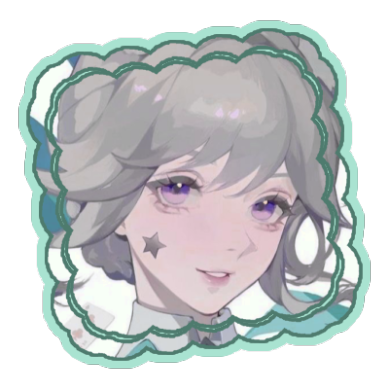
lynette icons graphics
7 notes
·
View notes
Text
a probably controversial genshin impact tier list.
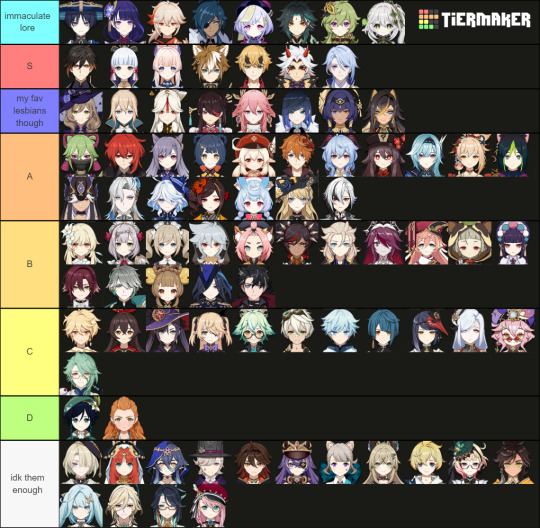
who's your s tier?
#genshin#genshin impact#gi#genshinimpact#venti#lisa#zhongli#diona#razor#nilou#ningguang#beidou#yae miko#raiden shogun#shenhe#neuvillette#genshin tier list
27 notes
·
View notes
Text
Ever After High animation is beautiful





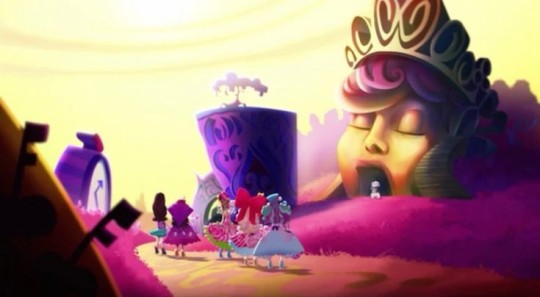

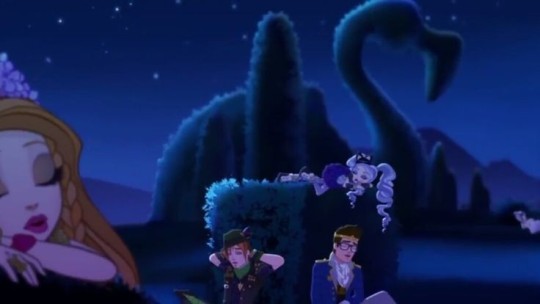
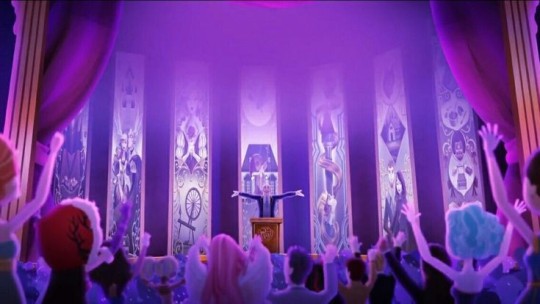
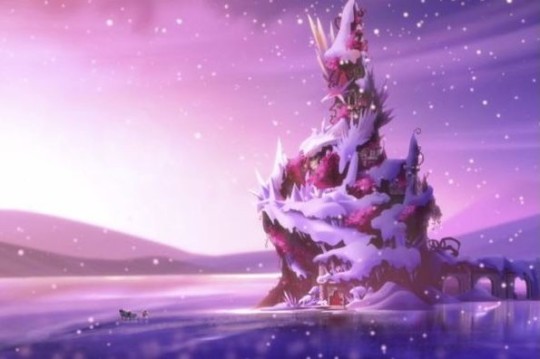
THIS SHOW NEEDS TO MAKE A HAT-TASTIC COMEBACK !!!
584 notes
·
View notes
Text
#TOTALDRAMATIERLIST
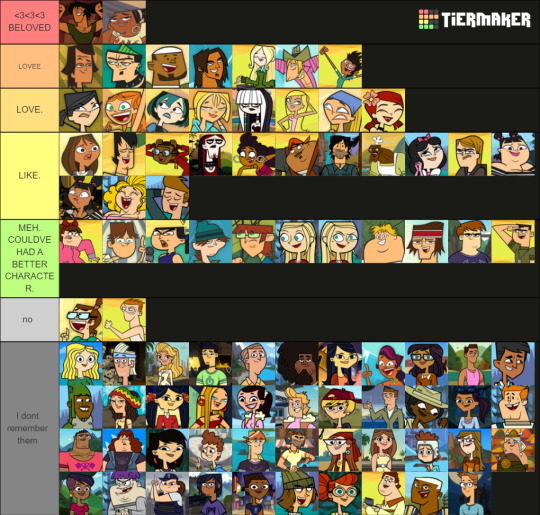
My tier list for total drama characters (I honestly don't remember a lot of these characters, I need to rewatch!)
#totaldrama#total drama#total drama island#total drama tier list#total drama world tour#tdi#gwen#total drama duncan#gwen total drama#heather total drama#td leshawna#total drama leshawna#total drama justin#total drama alejandro
16 notes
·
View notes
Text
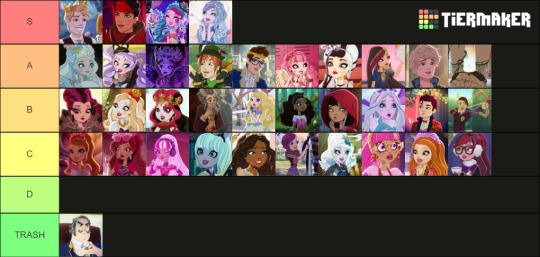
TIER LIST
Honestly, this was difficult to make I love most of the characters and don’t really dislike any of them.
S TIER
Of course, Daring is up at the S tier and that’s because I just love him. I like that his character actually has a little bit of development and that the development was later than immediately, so when it came it was so fun to see.
Chase barely got any screen time but tbh I roleplay as him so that’s pretty much why he’s there.
Madeline! Why would she NOT be here?
Farrah is here because I love her design and she’s adorable.
A TIER
Darling, her character is just so *chefs kiss* and I love everything about it. However, I wish that her kiss with Apple was talked about and acknowledged in later episodes after it occurred.
Kitty Cheshire has been one of my favorite characters, she’s purrfect, I love her. There’s actually no critiques I have, I just don’t really think she’s someone I’d tie with any of my S tiers.
I don’t need to say anything about the evil queen, I enjoy ever after high mothers.
SPARROW HOOOD! A little ROCKSTAR! He needs more screentime.
Dexter deserved so much more 😭 I love his little nerdy ass.
C.A. Cupid is adorable but I prefer her in monster high.
I really like Duchess Swan, her destiny is sad which explains her actions so well, and the way she moves is so satisfying to watch.
I don’t need to say anything about Ramona, good design.
Alistair is cute.
I’ve always wanted to see tiny’s face, his character is so cute.
B TIER
Raven Queen! I don’t dislike her more than A tier but I don’t consider her a character that I really love. She’s pretty and there’s nothing wrong with her, just not my taste.
Apple White, I don’t get the hate on Apple. Her character arc was so good and I don’t think people understand how manipulative her mother was. Of course there’s flaws to Apple’s character, but I honestly enjoy them because I eat it up. However, like Raven, she isn’t one of my favorites, she’s just there.
Lizzie Hearts I love, there’s no critiques on her.
tbh im getting tired of writing this so thats as far ill go, if youre curious about any ask!
whos on your S tier?
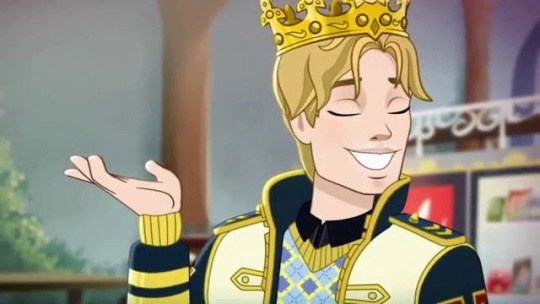
#everafterhighwonderland#ever after high#everafterhigh#royalty#ever after high rebel#rebel#ever after high royal#applewhite#apple white#daring charming#raven queen#madeline hatter#kitty cheshire#briar beauty
12 notes
·
View notes
Text

Nina Thumbell Headcanons!
She probably has secret hideouts throughout the land in trees or with flower petals, rocks, leaves, etc.
When she wants to be noticed by her friends she uses a megaphone to catch their attention.
If she ever happens to be shy or unsure she’ll hide behind whatever she thinks is safe enough, like a daisy petal as a little umbrella, creating a makeshift shield.
Thumb-sized Nina is an excellent storyteller and entertains her friends with epic tales of daring adventures, all while sitting cozily on the palm of their hands.
Normal-sized Nina is a fierce defender of her friends and has a knack for diffusing tense situations.
When she needs to apologize she’ll bake adorable pastries but the decoration would be a messy ‘I’m sorry’
She can probably give the best hugs when normal sized, they’re so enveloping, welcoming, and warm. Makes you feel safe and cherished.
Independent girl boss
She likes to tease people for sure.
Her and Jillian <3
will write more sometime
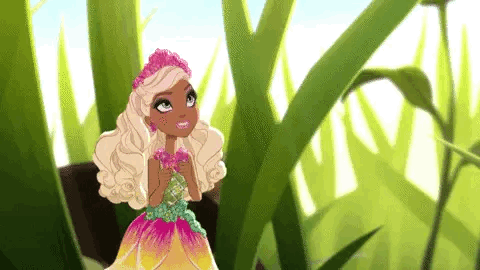
#nina thumbell#thumbelina#everafterhigh#ever after high#eah#ever after high rebel#ever after high royal#ever after high nina thumbell#rebel#royal#everafter#everafterchapter4
31 notes
·
View notes
Text
my writing resources doc that hopefully helps you!
5 notes
·
View notes
